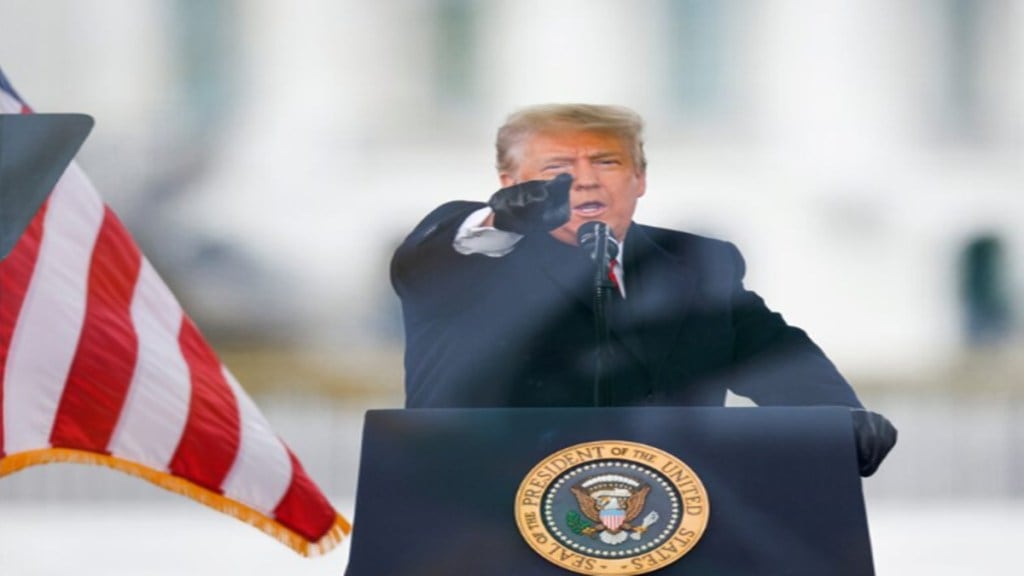The global equity market is likely to flare up from this week. Today, President Donald Trump is scheduled to address a joint session of Congress. Tariffs on Canadian and Mexican imports, as well as a doubling of the existing duty on Chinese goods, are also slated to take effect on Tuesday.
All 3 major US indexes closed in the red in February — a sign of increasing unease in markets. The VIX, Wall Street’s fear gauge, reached its highest point this year. The benchmark S&P 500 was down 1.4% in February, while the tech-heavy Nasdaq was down 4% this month, its worst month since April 2024.
The showdown between President Donald Trump, Vice President J.D. Vance and Ukrainian President Volodymyr Zelensky as well as the subsequent outrage in European capitals, propelled Europe’s defense stocks to their highest levels in years on Monday.
Trump has confirmed that tariffs on Canadian and Mexican products will commence on March 4, resolving confusion regarding the start date of import taxes.
Starting March 4, importers will be required to pay a 25% tax on Canadian and Mexican items, as well as a 10% levy on Canadian oil, according to Trump’s social media posts. Furthermore, Trump announced that he would slap an additional 10% duty on Chinese exports, in addition to the 10% tariff he imposed in early February.
Trump plans to double a 10% tariff on Chinese products (current 10% tariff), aiming to boost manufacturing jobs and generate revenue. However, economists worry that these new tariffs could increase consumer product prices, potentially leading to high inflation.
Economists are concerned that the new tariffs will raise costs on a wide range of products, potentially accelerating inflation and weakening the economy. According to a consumer study conducted by the University of Michigan earlier this month, consumer forecasts of future inflation increased as a result of tariff concerns.
Trump said the tariffs on Canada and Mexico would remain in place until fentanyl smuggling was eliminated or severely restricted. During the first cabinet meeting, Trump stated that 300,000 people have died in the US as a result of fentanyl, and he wants to ensure that Mexico, Canada, and China have taken steps to end the flow of fentanyl.
Canada is 95% dependent on the United States, while the United States is only 4% dependent on Canada.
The president has also announced that the United States will impose tariffs on computer chips, automobiles, and pharmaceuticals, as well as “reciprocal” duties against countries that tariff American exports, and has threatened a 25% tariff on the European Union.
Commerce Secretary Howard Lutnick stated that tariffs on Mexico and Canada remain “fluid,” implying that they may be lower than the first suggested 25%. In contrast, the additional 10% duty on China looks to have been effectively implemented.
The latest February employment report is set to be released on Friday, as officials keep an eye out for signs of labor market slowdown. Reports on consumer credit levels, the US trade balance, factory orders, and industry PMI survey findings are all expected this week.
Stock market investors may expect comments this week from Federal Reserve Governor Michelle Bowman and New York Fed President John Williams ahead of the FOMC meeting on March 18-19. The March FOMC meeting is associated with a Summary of Economic Projections giving market observers a peek into the US Fed dot plot.
Initial jobless claims for the week ending March 1 arrive on Thursday, March 6, while the U.S. employment report (February) releases on Friday. After Friday, Federal Reserve blackout period ahead of March 18-19 meeting begins.
Gold Price
Gold is facing pressure as the yellow metal was floating around $2,860 per ounce and was down about $100, or 4%, from its record high reached in late February. Over the past twelve months, gold is up by 40% while the S&P 500 is up by about 15%. The recent dip in gold price is despite Trump’s tariffs announced on imports from Canada, Mexico, and China.
Higher US Tariff means the dollar is getting stronger and hence a fall in gold price can be expected. However, tariffs are inflationary, which could push gold prices higher. A balance between the two could shape the price of gold in 2025. In India, gold price today is Rs 84, 820.

